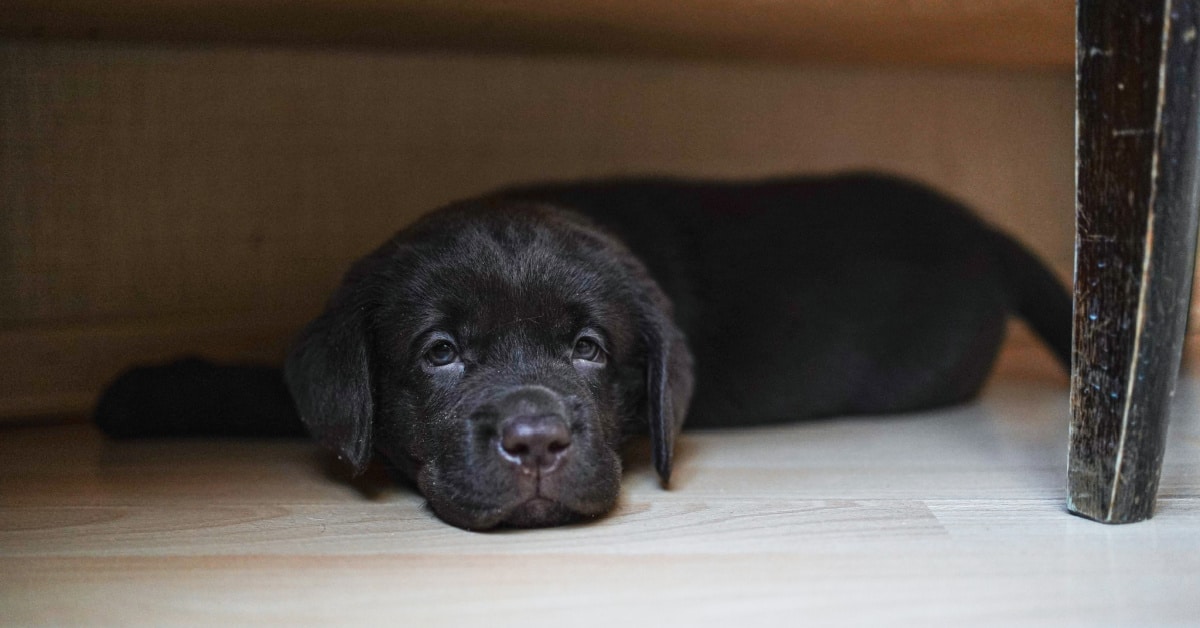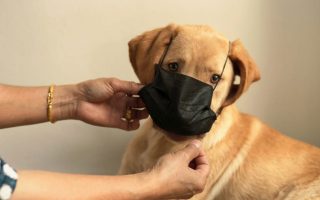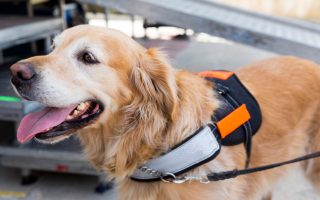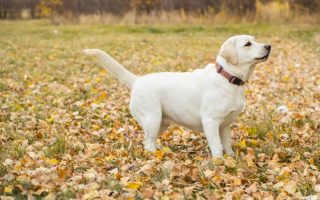Not all homes are already equipped to deal with the energy and spunk of a Labrador puppy, which is why Lab puppy-proofing your home is incredibly important.
There may be some hazards in your home that are not safe for a newly homed Labrador Retriever puppy. Consequently, you need to prepare.
Preparation does not only mean that you buy the necessary items or that you, as the owner, need to prepare yourself for your new Labrador puppy’s arrival.
Preparation also entails making sure that your home is free from things that might endanger your puppy.
In this article, we will be going over the ways that you can get your home ready for your Lab puppy’s arrival.
Even with their boundless energy and joy, you will still be able to guarantee a safe space for them by just making a couple of adjustments for Lab puppy-proofing your home.
Patience is key to Lab puppy-proofing your home
To preface the rest of this article, it is important to understand that your Lab puppy still does not understand all the ways of the human world.
It will take training, and most importantly, time, for them to blossom into the excellent canines they were meant to be.
With that, it is important to be patient with them in their journey. After all, in the beginning, just like everyone else, they will be a little bit misbehaved.
However, just accept your pup as they are. Give them tons of praise and positive reinforcement when they do things right.
It won’t be easy trying to housebreak your Lab puppy, but it will be worth every minute.
Tips for Lab puppy-proofing your home
Below are a handful of tips to help your Lab puppy-proof your household:
1) Restrict access.
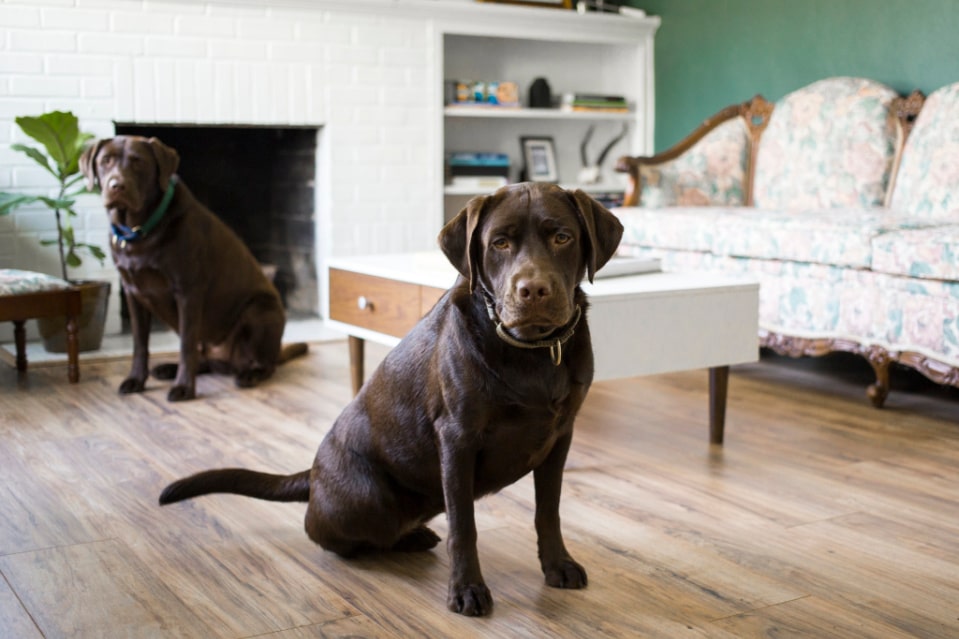
The first step to making sure that your home is safe for your Lab is to restrict their access. It is a good idea to designate a single room in the house for them to roam around in so that they have space to themselves.
You can also create a sizable playpen for them to spend their time in if you can’t designate a room for them.
The purpose of this area is for them to not have to keep running around your home unsupervised. This way, they will be able to avoid hazards around your home.
You can also put some of their toys in the playpen so that they don’t get bored.
Using a crate is also another excellent way to keep your Lab puppy in one place while you cannot watch them.
Bear in mind, however, that a crate is not a way to punish your puppy. You would be undermining the entire purpose of using the crate if you use it as any less than a sanctuary for your puppy.
That said, crating a puppy is a personal choice that not all owners may make.
Crates have a kind of bad reputation to them due to the tendency of some owners to abuse the use of crates.
But, when employed properly, crates can be a great training tool and safe space for your puppy.
Crates also make traveling with your puppy easy. So, if you ever need to make a trip to the vet or some other place, you will have much less trouble getting there.
2) Remove dangerous items.
When thinking about what ‘dangerous’ items mean, just think of your puppy as a very active baby that can get around the house really quickly.
These include removing cords that your Lab may trip themselves on, covering up accessible sockets, and making sure that they don’t have access to any hazardous items.
You don’t need to get rid of these items entirely if you don’t want to. It will be quite difficult to remove all your visible wires.
However, it is necessary to place or organize them in a manner that will make it difficult for your Lab to get to them.
Dangerous items also include small items that your Lab puppy might swallow while you are not watching.
These mean paper clips, coins, hair ties, and other small items that might just be lying around the house.
3) Shoo away temptation.
Labradors are notorious chewers, especially when they are younger. Knowing their tendency for chewing, it is very important to not let them get to items that they might chew on and ruin.
Keep your shoes and other chewable items safe and secure in their containers (don’t just leave them around).
You can also spray some anti-chew solutions on the legs of your tables and chairs. This will help discourage them from chewing on items that you cannot move.
Another thing would be to keep items off of low tables and cubbies. If you have any chewable items on low shelves that are out in the open, make sure to keep them properly in an inaccessible container as well.
Keep magazines, books, and other important documents out of their reach as they can easily tear through these items.
You may also need to look out for any low-hanging curtains as your Labrador can easily bite on those or get tangled up in them.
4) Remove toxic liquids and medicines.
Another thing to take care of is those medicine cabinets and the areas where you keep your toxic liquids.
If your medicine cabinet is somewhere accessible, or if your medicine is stored somewhere that your puppy can reach, transfer those items somewhere else.
In the same way, you should make sure that the liquids that you use for cleaning, such as detergent or bleaching solutions, are completely out of your Lab puppy’s reach.
These solutions are very dangerous to dogs when ingested, so you should avoid them as much as possible.
If you have other toxic items at home such as rat poison, make sure to place them somewhere safe. Clean up the area where you previously stored them to get rid of any excess residue.
5) Lock up those cabinets.
You may not realize it yet, but your puppy will be creative in opening those cabinets that they can reach.
At their age, your Lab puppy is still in their inquisitive phase, and they’re curious about everything!
As such, it is only necessary to place child-proof locks on cabinets and containers that your Lab puppy can reach.
Don’t limit it to what you think they can reach with ease because chances are that they will try their best to reach those areas.
It’s best to err on the side of caution when it comes to your Labrador’s safety and security.
6) Keep food away.
Many human foods are toxic to dogs. According to this study in 2016, much of the food-poisoning cases that occur in dogs and cats happen due to the lack of proper information on how these human-safe foods affect their pets.
It is paramount that you know what kinds of food are safe for your Lab and what types are dangerous for them.
Dangerous food items include chocolate, xylitol, onion, garlic, raisins, and so much more.
You may opt to put away these items somewhere safe. But, a better option would be to make sure that all food items are nowhere in your puppy’s reach.
It can be easy to forget about the food that we have around the house, so making a habit of keeping them away is a good habit to build.
7) Take care of the yard.
The yard (if you have one) is a happy place for your Lab puppy. That’s the place where they can go out and play around and have fun!
However, your yard is also a mess of potential hazards for your puppy, not to mention the risk that they could get out without you knowing.
Keep all of your garden tools in an area where your puppy can’t get to them, preferably in a shed with a lock on it.
You should also make sure that there are no gaps in the fences where your Lab puppy could squeeze out of and go outside.
Pointed fences are also a way for your dog to accidentally get tangled in their leash and hang themselves, which is a lesson that’s better read about than experienced.
Overexcited dogs can get into all sorts of trouble, so they need to be watched for these dangers.
If you have a small pool or pond in your backyard, it’s a good idea to fence these off for the meantime.
Although most Labradors love water, you don’t want your puppy to get caught up in water unsupervised.
8) Deal with all points of entry.
Points of entry or exit are any ways that your Labrador could get out of your property without you noticing.
These, of course, include all the small exits in your backyard fence that your puppy might squeeze out of.
Also, take note of all the doors in your home that your puppy can access.
The risk of your Lab getting out of the house without you knowing is part of the reason why it is so important to keep them in a designated area and always supervising them when they roam around the house.
Conclusion
The main idea behind puppy-proofing your home is so that your puppy is safe indoors and your belongings are also safe from their hyperactive chews.
Note that any steps you will be taking is for the good of both you and your puppy. Taking these precautions is important and missing out on them could cause you even more problems.
Remember that any items that are valuable to you or are dangerous to your puppy should be kept out of reach at all times.
Their instinct is to chew on things, so you really cannot blame them for doing what they think they have to do.
If all the above suggestions look like they’re too much to do, don’t worry since you won’t need to do all of these precautions for the rest of your Lab’s life.
These precautions are only very important during your puppy’s growing and maturing years.
Over time, you can start to ease out of these rigid rules for Lab puppy-proofing your home.

